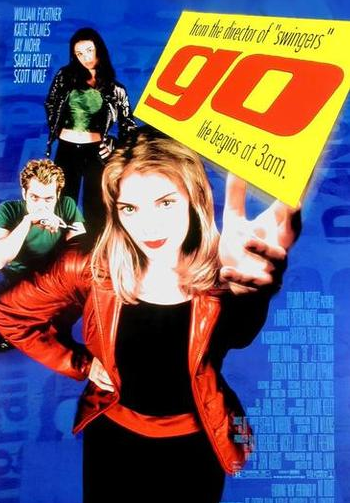Many tried and true ravers take issue with Doug Liman’s 1999 movie, Go, being considered a “rave” movie. After all, there are really only a handful of scenes shown inside the actual party that each of the characters are somehow tied to. However, considering the year and the fashions alone, Go is well-deserving of being categorized as a rave movie by virtue of these facts alone.

While others prefer the overt raveyness of classics like A Midsummer Night’s Rave, Human Traffic, Groove, It’s All Gone Pete Tong and Party Monster, Go holds a certain cachet for its soundtrack, director (Liman famously directed Swingers) and screenwriter (John August, who would later go on to write Charlie’s Angels and Charlie’s Angels: Full Throttle, both of which have a certain rave grandeur).
Maybe part of the reason bona fide ravers take issue with Go is, for starters, the casting of Katie Holmes, Scott Wolf and Jay Mohr, all the antithesis of the rave or kawaii aesthetic. The incorporation of ecstasy as a source of fear rather than a source of salvation may also have something to do with why rave purists take issue with Go.

While, at times, Go possesses a certain 200 Cigarettes feel (which also came out in 1999) in terms of merely showcasing a “wild” night set against the backdrop of intertwining stories, it has the distinct flavor of being of a certain rave scene moment in time–just after the point when the culture had become overly saturated but before it was reinvented in the mid-00s. Thus, if nothing else, Go warrants being deemed in the rave movie genre for, at the minimum, historical purposes. Though one could hardly qualify “New” by No Doubt as a rave anthem.





















